- Home
- H. P. Lovecraft
The Lurker at the Threshold
The Lurker at the Threshold Read online
Table of Contents
THE SURVIVOR
THE ANCESTOR
I
II
III
THE PEABODY HERITAGE
I
II
III
IV
THE LAMP OF ALHAZRED
THE GABLE WINDOW
I
II
III
THE SHADOW OUT OF SPACE
I
II
III
WENTWORTH’S DAY
THE SHUTTERED ROOM
I
II
III
IV
THE FISHERMAN OF FALCON POINT
WITCHES’ HOLLOW
THE SHADOW IN THE ATTIC
I
II
III
IV
V
THE DARK BROTHERHOOD
I
II
III
IV
V
THE HORROR FROM THE MIDDLE SPAN
I
II
III
IV
INNSMOUTH CLAY
THE LURKER AT THE THRESHOLD
I. Billington’s Wood
II. Manuscript of Stephen Bates
III. Narrative of Winfield Phillips
THE WATCHERS OUT OF TIME
I
II
III
IV
THE SURVIVOR
First published in Weird Tales, July, 1954.
Certain houses, like certain persons, manage somehow to proclaim at once their character for evil. Perhaps it is the aroma of evil deeds committed under a particular roof, long after the actual doers have passed away, that makes the gooseflesh come and the hair rise. Something of the original passion of the evil-doer, and of the horror felt by his victim, enters the heart of the innocent watcher, and he becomes suddenly conscious of tingling nerves, creeping skin, and a chilling of the blood. . .
—ALGERNON BLACKWOOD
I HAD never intended to speak or write again of the Charriere house, once I had fled Providence on that shocking night of discovery—there are memories which every man would seek to suppress, to disbelieve, to wipe out of existence—but I am forced to set down now the narrative of my brief acquaintance with the house on Benefit Street, and my precipitate flight therefrom, lest some innocent person be subjected to indignity by the police in an effort to explain the horrible discovery the police have made at last—that same ghastly horror it was my lot to look upon before any other human eye—and what I saw was surely far more terrible than what remained to be seen after all these years, the house having reverted to the city, as I had known it would.
While it is true that an antiquarian might be expected to know considerably less about some ancient avenues of human research than about old houses, it is surely conceivable that one who is steeped in the processes of research among the habitations of the human race might occasionally encounter a more abstruse mystery than the date of an ell or the source of a gambrel roof and find it possible to come to certain conclusions about it, no matter how incredible, how horrible or frightening or even—yes, damnable! In those quarters where antiquarians gather, the name of Alijah Atwood is not entirely unknown; modesty forbids me to say more, but it is surely permissible to point out that anyone sufficiently interested to look up references will find more than a few paragraphs about me in those directories devoted to information for the antiquary.
I came to Providence, Rhode Island, in 1930, intending to make only a brief visit and then go on to New Orleans. But I saw the Charriere house on Benefit Street, and was drawn to it as only an antiquarian would be drawn to any unusual house isolated in a New England street of a period not its own, a house clearly of some age, and with an indefinable aura that both attracted and repelled.
What was said about the Charriere house—that it was haunted—was no more than what was said about many an old, abandoned dwelling in the old world as well as in the new, and even, if I can depend on the solemn articles in the Journal of American Folklore, about the primitive dwellings of American Indians, Australian bush-people, the Polynesians, and many others. Of ghosts I do not wish to write; suffice it to say that there have been within the circle of my experience certain manifestations which have lent themselves to no scientific explanation, though I am rational enough to believe that there is such explanation to be found, once man chances upon the proper interpretation through the correct scientific approach.
In that sense, surely the Charriere house was not haunted. No spectre passed among its rooms rattling its chain, no voice moaned at midnight, no sepulchral figure appeared at the witching hour to warn of approaching doom. But that there was an aura about the house—one of evil? of terror? of hideous, eldritch things?—none could deny; and had I been born a less insensitive clod, I have no doubt that the house would have driven me forth raving out of mind. Its aura was less tangible than others I have known, but it suggested that the house concealed unspeakable secrets, long hidden from human perception. Above all else, it conveyed an overpowering sense of age—of centuries not alone of its own being, but far, far in the past, when the world was young, which was curious indeed, for the house, however old, was less than three centuries of age.
I saw it first as an antiquarian, delighted to discover set in a row of staid New England houses a house which was manifestly of a seventeenth century Quebec style, and thus so different from its neighbors as to attract immediately the eye of any passerby. I had made many visits to Quebec, as well as to other old cities of the North American continent, but on this first visit to Providence, I had not come primarily in search of ancient dwellings, but to call upon a fellow antiquarian of note, and it was on my way to his home on Barnes Street that I passed the Charriere house, observed that it was not tenanted, and resolved to lease it for my own. Even so, I might not have done so, had it not been for the curious reluctance of my friend to speak of the house, and, indeed, his seeming unwillingness that I go near the place. Perhaps I do him an injustice in retrospect, for he, poor fellow, was even then on his deathbed, though neither of us knew it; so it was at his bedside I sat, and not in his study, and it was there that I asked about the house, describing it unmistakably, for, of course, I did not then know its name or anything about it.
A man named Charriere had owned it—a French surgeon, who had come down from Quebec. But who had built it, Gamwell did not know; it was Charriere he had known. “A tall, rough-skinned man—I saw little of him, but no one saw more. He had retired from practice,” said Gamwell. He had lived there—and presumably older members of his family, though Gamwell could not say as to this—for as long as Gamwell had known the house. Dr. Charriere had lived a reclusive life, and had died, according to notice duly published in the Providence Journal, in 1927, three years ago. Indeed, the date of Dr. Charriere’s death was the only date that Gamwell could give me; all else was shrouded in vagueness. The house had not been rented more than once; there had been a brief occupation by a professional man and his family, but they had left it after a month, complaining of its dampness and the smells of the old house; since then it had stood empty, but it could not be torn down, for Dr. Charriere had left in his will a considerable sum of money to keep the property off the tax-delinquent list for a long enough time—some said twenty years—to guarantee that the house would be standing there if and when heirs of the surgeon appeared to lay claim to it, the doctor having written vaguely of a nephew in French Indo-China, on military service. All attempts to find the nephew had proved futile, and now the house was being permitted to stand until the period specified in the will of Dr. Charriere had expired. “I think of leasing it,” I told Gamwell.
Ill though he was, my fellow antiquarian raised himself up on one elbow in protest. “A passing whim, Atwood—let it pass. I have heard disquieting things of the house.”
“What things?” I asked him bluntly. But of these things he would not speak; he only shook his head feebly and closed his eyes. “I hope to examine it tomorrow,” I went on.
“It offers nothing you could not find in Quebec, believe me,” said Gamwell.
But, as I have set forth, his curious opposition served only to augment my desire to examine the house at close range. I did not mean to spend a lifetime there, but only to lease it for a half year or so, and make it a base of operations, while I went about the countryside—around the city as well as the lanes and byways of Providence in search of the antiquities of that region. Gamwell did surrender at last the name of the firm of lawyers in whose hands the Charriere will had been placed, and when I made application to them, and overcame their own lack of enthusiasm, I became master of the old Charriere house for a period of not more than six months, and less, if I so chose.
I took possession of the house at once, though I was somewhat nonplussed to discover that, while running water had been put in, electricity had not. I found among the furnishings of the house—these had been left in each room, exactly as at the death of Dr. Charriere—a half dozen lamps of various shapes and ages, some of them apparently dating back a century or more, with which to light my way. I had expected to find the house cob webbed and dusty, but I was surprised to learn that this was not the case, though I had not understood that the lawyers—the firm of Baker & Greenbaugh—had undertaken to care for the house during the half century it was to stand, short of someone’s appearing to lay claim to it as the sole surviv
or of Dr. Charriere and his line.
The house was all I had hoped for. It was heavily timbered, and in some of the rooms paper had begun to peel from the plaster, while in others the plaster itself had never been covered with paper, and shone yellow with age on the wall.
Its rooms were irregular—appearing to be either quite large or very small. It was of two storeys, but the upper floor had not been much used. The lower or ground floor, however, abounded in evidence of its onetime occupant, the surgeon, for one room of it had manifestly served him as a laboratory of some kind, and an adjoining room as a study, for both had the look of having been but recently abandoned in the midst of some inquiry or research, quite as if the occupation of the house by its brief tenant— post-mortem Charriere—had not touched upon these rooms. And perhaps it had not, for the house was large enough to permit of habitation without disturbing them, both laboratory and study being at the back of the house, opening out upon a garden, now much overgrown with shrubs and trees, a garden of some size, since the house occupied a frontage of over three lots in width, and in depth reached to a high stone wall which was but a lot removed from the street in its rear.
Dr. Charriere had evidently been in the midst of some work when his hour had struck, and I confess its nature intrigued me at once, for it was plainly no ordinary one. The inquiry was not alone a study of man, for there were strange, almost cabalistic drawings, resembling physiological charts, of various kinds of saurians, though the most prominent among them were of the order Loricata and the genera Crocodylus and Osteolaemus, though there were also recognizable drawings of Gavialis, Tomistoma, Gaiman and Alligator, with a lesser number being speculative sketches of earlier members of this reptilian order reaching back to the Jurassic period. Yet even this fascinating glimpse of the surgeon’s odd vein of inquiry would not have stimulated any really genuine delving into his affairs had it not been for the antiquarian mystery of the house.
The Charriere house impressed me at once as having been the product of its age, save for the later introduction of waterworks. I had all along assumed that Dr. Charriere himself had built it; Gamwell had nowhere in our somewhat elliptical conversation given me to understand otherwise; nor had he, for that matter, mentioned the surgeon’s age at his death. Presuming it to be a well-rounded eighty years, then it was certainly not he who had built the house, for internal evidence spoke clearly of its origin in the vicinity of the year 1700!—or over two centuries before Dr. Charriere’s death. It seemed to me, therefore, that the house only bore the name of its most recent long-time tenant, and not that of its builder; it was the pursuit of this problem which brought me to several disturbing facts which bore no relationship, seemingly, to credible facts.
For one thing, the year of Dr. Charriere’s birth was nowhere in evidence. I sought out his grave—it was, strangely, on his own property; he had obtained permission to be buried in his garden, not far from a gracious old well which stood, roofed over, with bucket and all still as it had stood, doubtless, for almost as long as the house had been standing—with a view to examining his headstone for the date of his birth, but, to my disappointment and chagrin, his stone bore only his name—Jean-Francois Charriere—his calling: Surgeon—his places of residence or professional occupation—Bayonne : Paris : Pondicherry : Quebec : Providence—and the year of his death: 1927. No more. This was enough only to further me on my quest, and forthwith I started to make inquiry by letter of acquaintances in various places where research might be done.
Within a fortnight, the results of my inquiries were at hand. But, far from being in any way satisfied, I was more perplexed than ever. I had made my first inquiry of a correspondent in Bayonne, presuming that, since this was first mentioned on the stone, Charriere might have been born in that vicinity. I had next inquired in Paris, then of a friend in London, who might have access to information in British archives pertaining to India, and then in Quebec. What did I gleen from all this correspondence but a riddling sequence of dates? A Jean-Francois Charriere had indeed been born in Bayonne—but in the year 1636! The name was not unknown in Paris, either, for a seventeen-year old lad of that name had studied under the Royalist exile, Richard Wiseman, in 1653 and for three years thereafter. At Pondicherry—and later, too, on the Caronmandall Coast of India—one Dr. Jean-Francois Charriere, surgeon in the French army, had been on duty from 1674 onward. And in Quebec, the earliest record of Dr. Charriere was in 1691; he had practiced in that city for six years, and had then left the city for an unknown destination.
I was left, patently, with but one conclusion: that the said Dr. Jean-Francois Charriere, born in Bayonne, 1636, last known to have been in Quebec the very year of the erection of the Charriere house on Benefit Street, was a forebear of the same name as the late surgeon who had last occupied the house. But if so, there was an absolute lacuna between that time in 1697 and the lifetime of the last occupant of the house, for there was nowhere any account of the family of that earlier Jean-Francois Charriere; if there had been a Madame Charriere, if there had been children—as assuredly there must have been for the line to continue to the present century—there was no record of them. It was not impossible that the elderly gentleman who had come down from Quebec might have been of single status upon his arrival in Providence, and might have married thereafter. He would then have been sixty-one years of age. Yet a search of the appropriate registry failed to reveal any record of such a marriage, and I was left more bewildered than ever, though, as an antiquarian, I was fully aware of the difficulties of discovering facts and I was not at that time too discouraged to continue my inquiries.
I took a new line, and approached the firm of Baker & Greenbaugh for information about the late Dr. Charriere. Here an even more curious rebuff awaited me, for when I inquired about the appearance of the French surgeon, both the lawyers were forced to admit that they had never laid eyes on him. All their instructions had come by letter, together with cheques of generous figures; they had acted for Dr. Charriere approximately six years before his death, and thereafter; before that time, they had not been retained by Dr. Charriere.
I inquired then about his “nephew,” since the existence of a nephew implied, at least, that there had at one time been a sister or brother to Charriere. But here, too, I was rebuffed; Gamwell had misinformed me, for Charriere had not specifically identified him as a nephew, but only as “the sole male survivor of my line”; this survivor had only been presumed to have been a nephew, and all search for him had come to naught, though there was that in Dr. Charriere’s will which implied that the said “sole male survivor” would not need to be sought, but would make application to the firm of Baker & Greenbaugh either in person or by letter in such terms as to be unmistakable. Mystery there was, certainly; the lawyers did not deny it, but it was understood, also, that they had been well rewarded for their trust, too well to permit of any betrayal of it save in such casual terms as they had related to me. After all, as one of the lawyers sensibly pointed out, only three years had elapsed since the death of Dr. Charriere, and there was still ample time for the survivor to present himself.
Failing in this line of inquiry, I again called on my old friend, Gamwell, who was still abed, and now noticeably weaker. His attending physician, whom I encountered on the way out, now for the first time intimated that old Gamwell might not rise again, and cautioned me not to excite him, or to tire him with too many questions. Nevertheless, I was determined to ferret out what I could about Charriere, though I was not entirely prepared for the keen scrutiny to which I was subjected by Gamwell, quite as if he had expected that less than three weeks’ residence in the Charriere house should have altered my very appearance.
After the amenities had been exchanged, I turned to the subject about which I had come; explaining that I had found the house so interesting, I desired to know more of its late tenant. Gamwell had mentioned seeing him.
“But that was years ago,” said Gamwell. “He’s been dead three years. Let me see—1907, I think.”
I was astounded. “But that was twenty years before he died!” I protested.
Nevertheless, Gamwell insisted, that was the year.
And how had he looked? I pressed the question upon him.
Disappointingly, senility and illness had encroached upon the old man’s once fine mind.

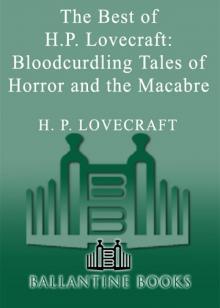 The Best of H.P. Lovecraft
The Best of H.P. Lovecraft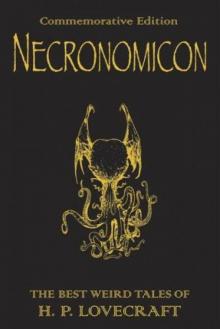 The Definitive H.P. Lovecraft: 67 Tales Of Horror In One Volume
The Definitive H.P. Lovecraft: 67 Tales Of Horror In One Volume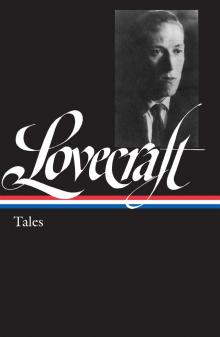 The Complete Works of H.P. Lovecraft
The Complete Works of H.P. Lovecraft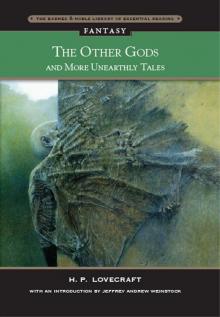 Other Gods and More Unearthly Tales
Other Gods and More Unearthly Tales Lovecraft's Fiction Volume I, 1905-1925
Lovecraft's Fiction Volume I, 1905-1925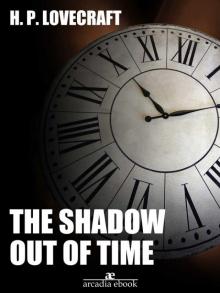 The Shadow Out of Time
The Shadow Out of Time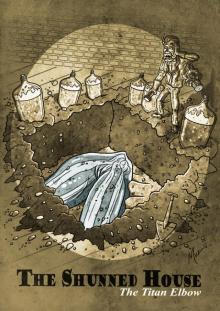 The Shunned House
The Shunned House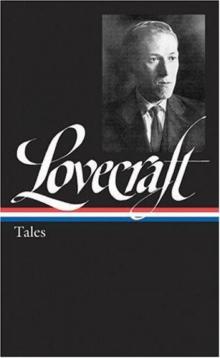 Lovecraft's Fiction Volume II, 1926-1928
Lovecraft's Fiction Volume II, 1926-1928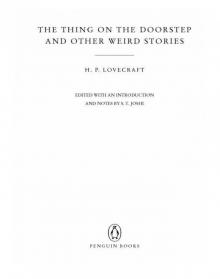 The Thing on the Doorstep and Other Weird Stories
The Thing on the Doorstep and Other Weird Stories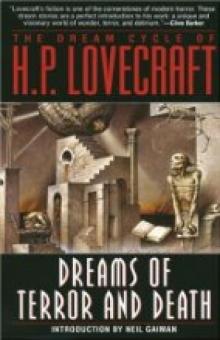 Dream Cycle of H. P. Lovecraft: Dreams of Terror and Death
Dream Cycle of H. P. Lovecraft: Dreams of Terror and Death Great Tales of Horror
Great Tales of Horror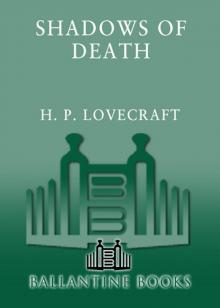 Shadows of Death
Shadows of Death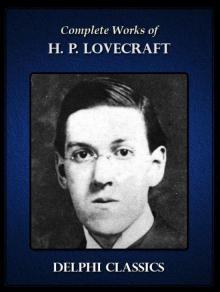 Delphi Complete Works of H. P. Lovecraft (Illustrated)
Delphi Complete Works of H. P. Lovecraft (Illustrated)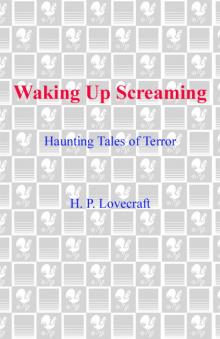 Waking Up Screaming: Haunting Tales of Terror
Waking Up Screaming: Haunting Tales of Terror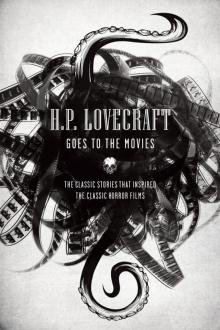 H.P. Lovecraft Goes to the Movies
H.P. Lovecraft Goes to the Movies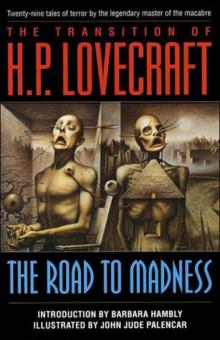 The Road to Madness
The Road to Madness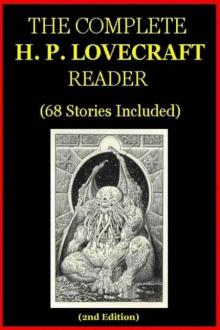 The Complete H.P. Lovecraft Reader (68 Stories)
The Complete H.P. Lovecraft Reader (68 Stories)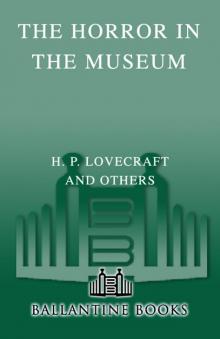 The Horror in the Museum
The Horror in the Museum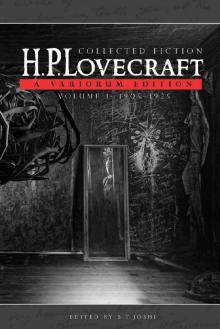 Collected Fiction Volume 1 (1905-1925): A Variorum Edition
Collected Fiction Volume 1 (1905-1925): A Variorum Edition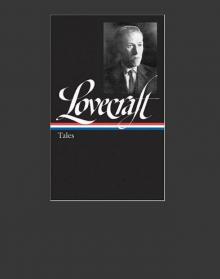 Lovecrafts_Fiction, vol.I_1905-1925
Lovecrafts_Fiction, vol.I_1905-1925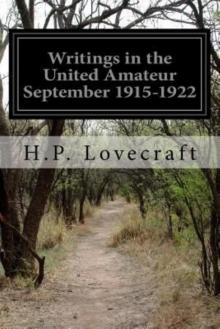 Writings in the United Amateur, 1915-1922
Writings in the United Amateur, 1915-1922 H.P. Lovecraft: The Complete Works
H.P. Lovecraft: The Complete Works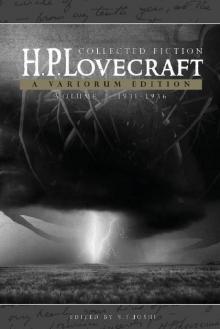 Collected Fiction Volume 3 (1931-1936): A Variorum Edition
Collected Fiction Volume 3 (1931-1936): A Variorum Edition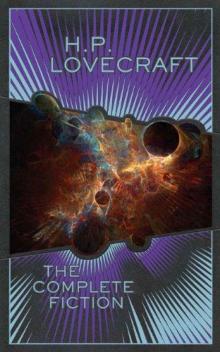 H.P. Lovecraft: The Complete Fiction
H.P. Lovecraft: The Complete Fiction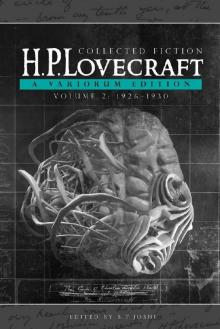 Collected Fiction Volume 2 (1926-1930): A Variorum Edition
Collected Fiction Volume 2 (1926-1930): A Variorum Edition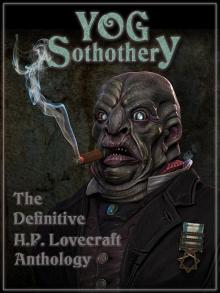 Yog Sothothery - The Definitive H.P. Lovecraft Anthology
Yog Sothothery - The Definitive H.P. Lovecraft Anthology The Complete H.P. Lovecraft Collection (Xist Classics)
The Complete H.P. Lovecraft Collection (Xist Classics)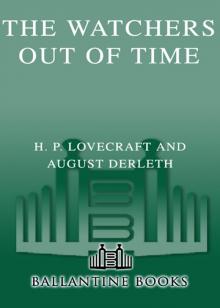 The Watchers Out of Time
The Watchers Out of Time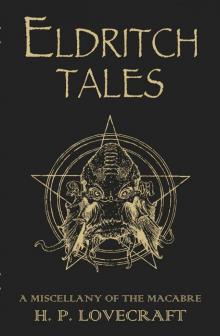 Eldritch Tales
Eldritch Tales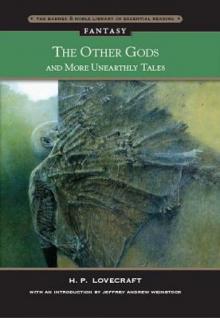 The Other Gods And More Unearthly Tales
The Other Gods And More Unearthly Tales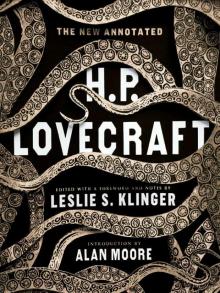 The New Annotated H. P. Lovecraft
The New Annotated H. P. Lovecraft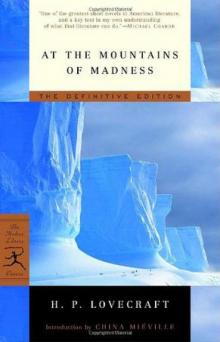 At the mountains of madness
At the mountains of madness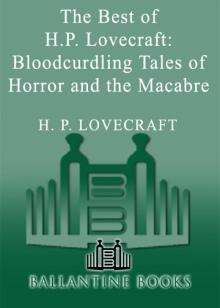 Bloodcurdling Tales of Horror and the Macabre
Bloodcurdling Tales of Horror and the Macabre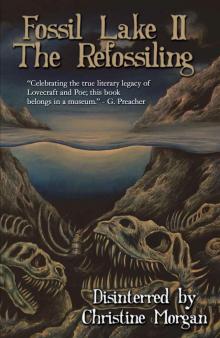 Fossil Lake II: The Refossiling
Fossil Lake II: The Refossiling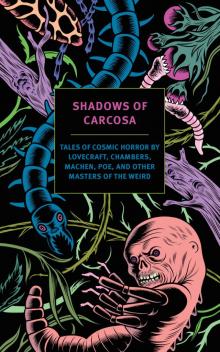 Shadows of Carcosa: Tales of Cosmic Horror by Lovecraft, Chambers, Machen, Poe, and Other Masters of the Weird
Shadows of Carcosa: Tales of Cosmic Horror by Lovecraft, Chambers, Machen, Poe, and Other Masters of the Weird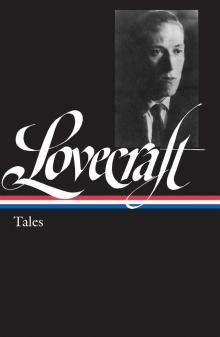 H. P. Lovecraft
H. P. Lovecraft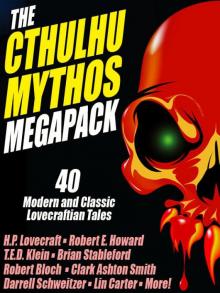 The Cthulhu Mythos Megapack
The Cthulhu Mythos Megapack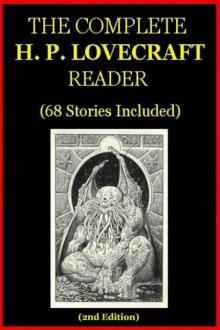 The Complete H. P. Lovecraft Reader (2nd Edition)
The Complete H. P. Lovecraft Reader (2nd Edition)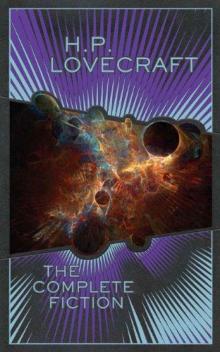 The Complete Fiction
The Complete Fiction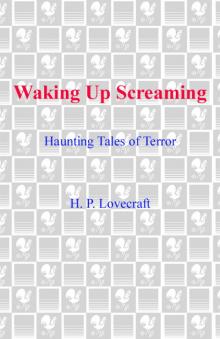 Waking Up Screaming
Waking Up Screaming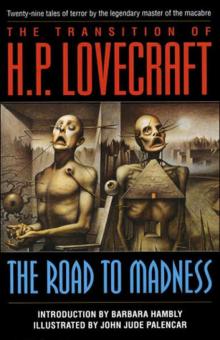 Transition of H. P. Lovecraft
Transition of H. P. Lovecraft![[1935] The Shadow Out of Time Read online](http://i1.bookreadfree.com/i2/04/12/1935_the_shadow_out_of_time_preview.jpg) [1935] The Shadow Out of Time
[1935] The Shadow Out of Time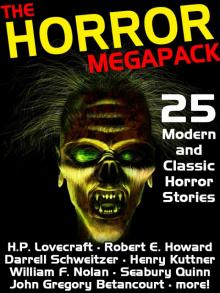 The Horror Megapack
The Horror Megapack